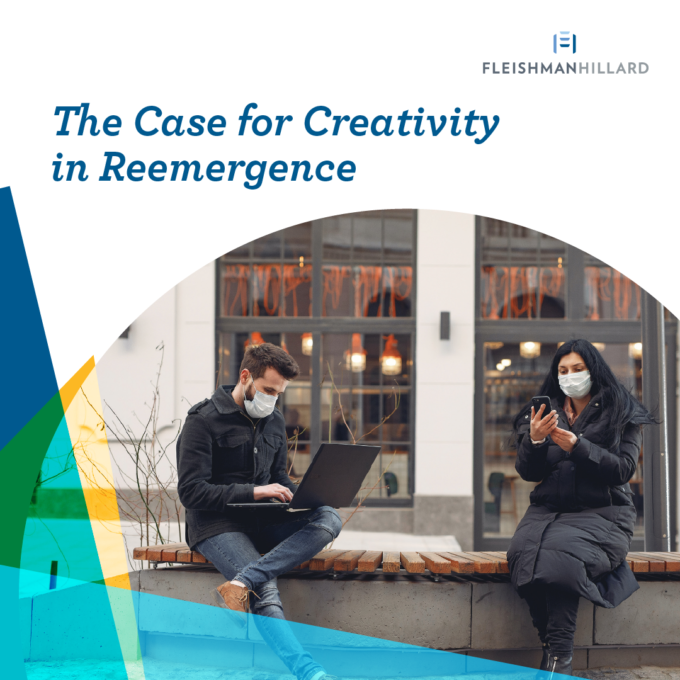
The following article is an extract from the latest FleishmanHillard global report: Recovery and Resurgence Communications: what tech sector pros need to do now.
Author: Jared Carneson, Senior Vice President and Senior Partner, FleishmanHillard San Francisco.
While the verdict is out on which behavioral shift takes center stage in a post-pandemic reemergence, people cannot deny that COVID-19 has forced rapid digital transformation at scale. And most likely, there is no going back.
As we seek to adopt some of the behavior entrenched by the global pandemic, digitization has shifted from a line item lurking on the C-suite agenda, to a worldwide imperative necessary for economic and societal survival.
Our innate needs to gather, to love, to seek validation, and to be entertained have not gone anywhere — they remain fixed and baked into the human experience. The difference now, however, is that these needs are just more difficult to service in the mire of a pandemic. But, with that said, make no mistake, the fictional Dr. Ian Malcolm from Jurassic Park captured this sentiment best when he said that, ”If there is one thing the history of evolution has taught us, it’s that life will not be contained. Life breaks free, it expands to new territories and crashes through barriers, painfully, maybe even dangerously … life … finds a way.”
Those who have the courage to see the challenges in reemergence as opportunities are unlocking unprecedented productivity and creativity. Now is the time to go all-in on ingenuity. As an agency, we have spent the past few months helping clients creatively unpack and translate physical products and service experiences into more appropriate virtual offerings. This virtual proxy is the status quo, but the next layer of conversation focuses on differentiation, driven through the smart use of platforms, services and emerging technology.
With this imperative in mind, we can expect to see the emergence of more creative technologists ushering in smarter ways to engage with the world.
We have been on the precipice of a convergence of next generation tech for some time. This convergence coalesces at the intersection of next-generation connectivity and computing, coupled with novel data science, resulting in an amalgamation of automation and virtual world augmentation.
These leaps forward through 5G, quantum computing, IOT and AI will fundamentally change industries across the board. The next few years of technological innovation promise several incredibly exciting advancements ranging from AI-driven drug discovery and robotic farming to the future of hyper-personalized education and less-invasive medical interventions — all at scale. Currently, skepticism induced by technological vilification and a lack of trust in both tech and political leaders has hindered the widespread embracement of innovation. But now, with the pandemic fueling a recontextualized need for technological innovation, we will witness a reawakened desire for the products, services and goods that were once only moon-shot prototypes for future digital life. In short, the pandemic has catalyzed the arrival of the future.
Headlines are ripe with predictions about the increased cycle of innovation as a direct result of the pandemic, boldly stating that we can expect five years’ worth of innovation in 12 months. And for once, there is a solid grounding to what might have been previously filed under futurist narrative. Even at the most fundamental level, things like telemedicine, cloud-based collaboration and virtual conferencing have seen mass adoption through a layer of late adopters (all technologies that have historically taken years to realize). As a result, even in this narrow ambit, we now find a new benchmark from which to innovate.
In this environment, the reemergence creates a huge opportunity for a diversification of your communications mix — multidimensional needs demand a multidimensional communications team. And key to that need is the integration of creativity at the core of all communications activity. The barriers for messages to break through with true traction are denser than ever. In order for stories to resonate with audiences, they need to align with that audience’s interests, the predominant news agenda, channel algorithms, hyper-personalization, sociopolitical issues and content fatigue — those with courage to bring creativity into the core are experiencing more success in navigating this particularly complex environment.
Individuals, teams and organizations positioned to usher in creativity as a key tool will be the ones able to shift perceptions and win hearts and minds.
This impetus is our ice age. A moment in time that we may very well look back on as a technological and creative leap forward for those brave enough to double down on unbridled, courageous creativity.
Find Out More
-
The metaverse – Is it important for your business?
June 2, 2022
-
First Year At A Job And It Had To Be 2020!
June 11, 2021
-
PR trends accelerated by the COVID-19 pandemic
February 19, 2021
